Astronomers have used the Very Long Baseline Array (VLBA) to discover that the first black hole ever detected is actually much larger than previously believed. So large, at 21 times the mass of the Sun, that it challenges existing theories about the evolution of stars and how they form black holes. These constraints should limit stellar black holes in binary systems to about 15 solar masses.
Cygnus X-1 is a Milky Way binary system that contains a black hole and a supergiant companion star feeding it gas and other material. First discovered in 1964, the binary system has gone on to become one of the most intensely studied objects in astronomy. Yet, our familiarity with Cygnus X-1 doesn’t mean it can’t still deliver a surprise or two.
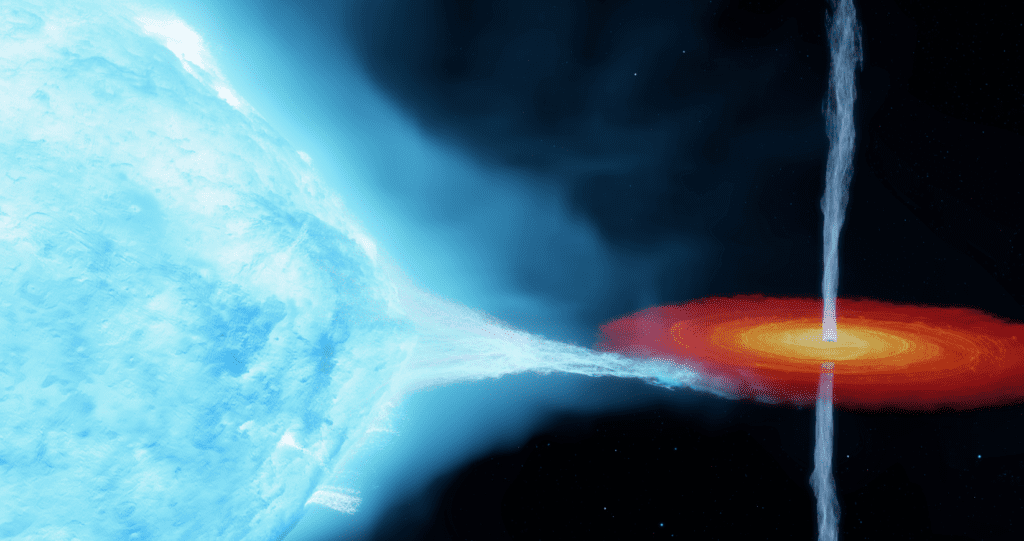
companion star located 7,200 light-years from Earth. (ICRAR)
In addition to finding the black hole is 50% more massive than prior estimates, near 21 solar masses as opposed to 15 solar masses, the team also discovered that the companion star also has a greater mass than previous measurements had revealed. The system as a whole is 20% further away than previously calculated–7,200 light-years from Earth as opposed to 6,100 light-years.
“We know that Cygnus X-1 hosts a black hole that is 21 times the mass of the Sun. We also learned that the supergiant companion star in Cygnus X-1 is also more massive than we had thought, with a mass of about 40 times the mass of the Sun,” Professor James Miller-Jones, the International Centre for Radio Astronomy Research (ICRAR), Curtin University, Australia, tells ZME Science. “The revised masses and distances also lead to an updated orbital separation between the star and the black hole — they orbit each other at a separation of one-quarter the distance from the Earth to the Sun.”
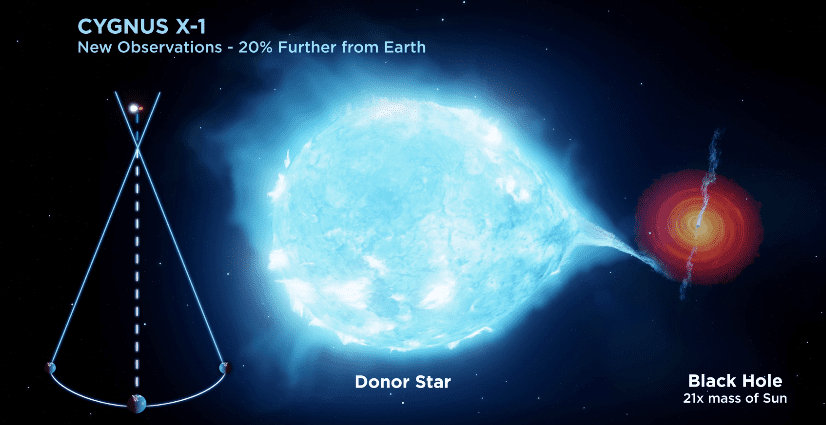
The finding, published in the latest edition of the journal Science, means that Cygnus X-1 contains the largest black hole created through the collapse of a star alone, that has ever been detected with traditional electromagnetic astronomy without the use of gravitational waves. Larger black holes do of course exist, but these are formed through other mechanisms such as mergers between smaller black holes after that initial stellar collapse.
Miller-Jones, the study’s lead researcher, goes on to explain that the team also learned that the black hole is spinning very rapidly , close to its maximum possible speed.
“With all this new information, we were able to propose a likely scenario for how this system formed, which can explain its observed properties.”
Professor James Miller-Jones, ICRAR, Curtin University
The finding doesn’t conform to current theories about black hole formation and stellar development in binary systems as its mass is greater than the limit imposed on such an object.
How Cygnus X-1 Challenges Theories of Stellar Evolution
The team chanced on their finding whilst conducting an ambitious project to observe Cygnus X-1 almost continuously over a full 5.6-day orbit with the network of radio telescopes that comprise VLBA and X-ray telescopes. The aim of the research was to better understand how gas being fed into a black hole from a binary partner via a spiraling accretion disc connects to powerful jets of material that launch out from near the central region at near light speed.
“We had not originally aimed to refine the distance and the mass of the black hole but realised that our data would allow us to do so, by accounting properly for the effects of the black hole orbit. But there is still a wealth of data from this rich observing campaign that we are looking to analyse more fully.”
Professor James Miller-Jones, ICRAR, Curtin University
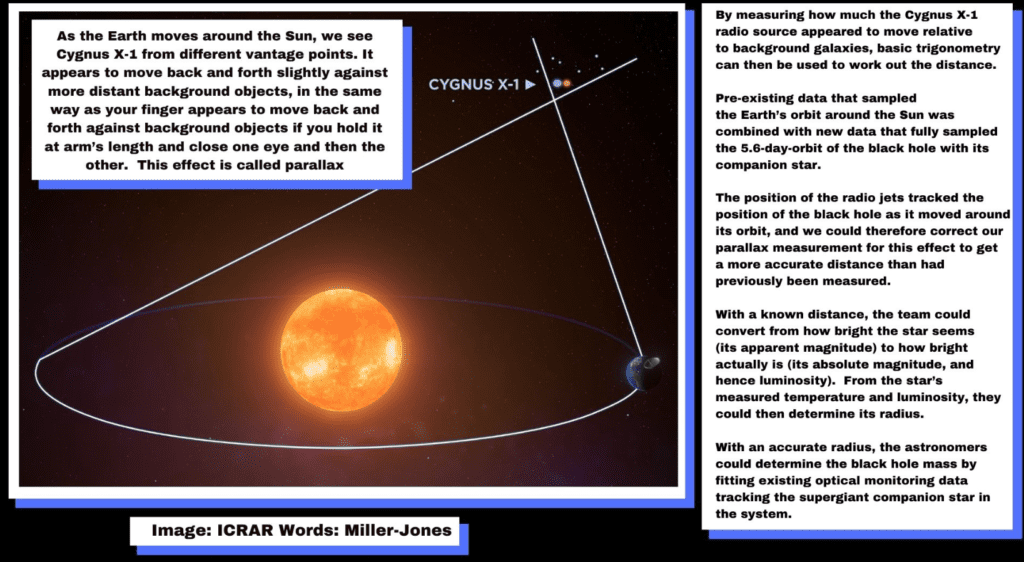
“Black holes form from the deaths of the most massive stars when they run out of fuel and gravity takes over,” says Miller-Jones. “The mass of the resulting black hole is set by the initial mass of the star from which it formed — which we call the progenitor star — the amount of mass that star lost in winds over its lifetime, and any interactions with a nearby companion star.”
Miller-Jones continues, saying massive stars launch very powerful winds from their surfaces, which leads to significant mass loss over their few-million year lifetimes. Some of the later phases of star’s evolution have particularly strong winds — determined by the abundance of elements heavier than helium in the gas from which the star was formed. More heavy elements mean stronger winds, and ultimately, a less massive star immediately before gravitational collapse.
While some stars can also lose further mass in supernova explosions as they collapse to form a black hole, the evidence suggests that in Cygnus X-1, there was no explosion, and the star collapsed directly into a black hole,” says Miller-Jones. “The stronger the stellar winds during the late evolutionary phases of the star, the less massive we would have expected the black hole to be.”
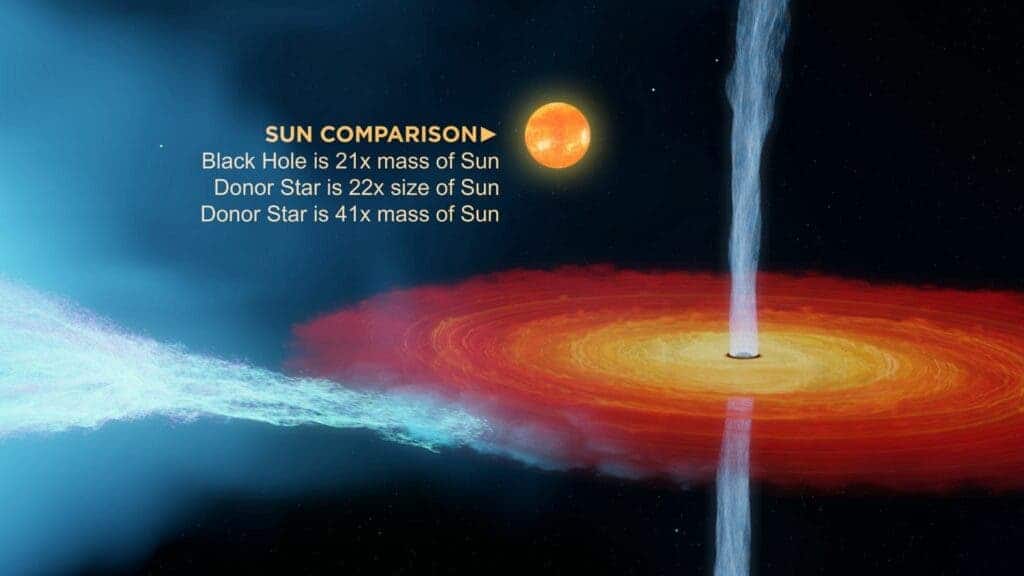
At first, the team wasn’t totally aware of just how significant their discovery of mass disparities in the Cygnus X-1 binary system was. “I think that our biggest surprise was when we appreciated the full implications of our measurements,” Miller-Jones says. “As observational astronomers, my team and I had already found that we could revise the source distance and the black hole mass. However, it was not until I visited a colleague, Professor Ilya Mandel of Monash University, who is a theoretical astronomer, that we realised how important this actually was.”
Mandel–co-author on the resulting paper– realised that a 21-solar mass black hole was too massive to form in the Milky Way with the constraints in place due to the current prevailing estimates of the amount of mass lost by massive stars in stellar winds.
“The existence of such a massive black hole in our own Milky Way galaxy has shown us that the most massive stars blow less mass off their surface in winds than we had previously estimated. This improves our knowledge of how black holes form from the most massive stars.”
Professor James Miller-Jones, ICRAR, Curtin University
Cygnus X-1: No Stranger to Contraversy
The team’s findings have allowed them to put forward a scenario that would allow the formation of a 21 solar mass black hole in a binary system. “We suggest that the star that eventually collapsed into a black hole began its life a few million years ago with a mass of 55-75 times the mass of the Sun,” Miller-Jones tells ZME. “Over its lifetime, it was close enough to its companion–the current supergiant–that gas from its surface was transferred onto its companion. This removed the outer layers of the black hole progenitor and caused it to rotate more rapidly because the two stars were always keeping the same face towards one another.
“Eventually, possibly as recently as a few tens of thousands of years ago the progenitor star collapsed directly into a black hole–of close to its current mass of 21 times the mass of the Sun–without a supernova explosion.”
Professor James Miller-Jones, ICRAR, Curtin University
Additionally, as well as gaining an insight into the black hole’s birth, Miller-Jones believes the team’s results could also indicate how the system could end its life. “Finally, we considered the eventual fate of this system,” the paper’s lead author says. “While the current companion star may eventually form a black hole, the separation of the two stars is such that the two black holes are unlikely to merge on a timescale comparable to the age of the Universe.”
A companion paper appearing at the same time in the Astrophysical Journal will delve deeper into these elements of the research.
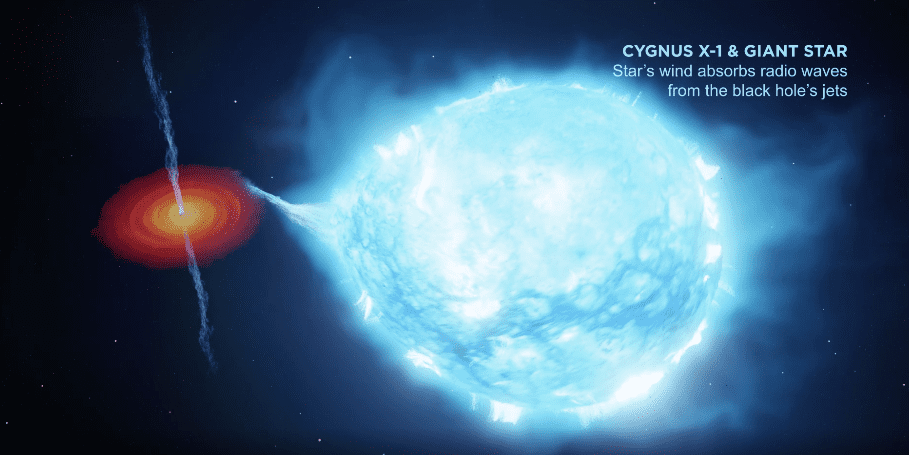
This isn’t the first time that Cygnus X-1, and more specifically its black hole, has sparked discussion in the fields of astronomy and cosmology. As speculation grew during that the intense X-ray source in the region was the result of a black hole, renowned physicist Stephen Hawking bet fellow scientist Kip Thorne–well known for his black hole work–in 1974 that Cygnus X-1 did not contain a black hole.
“This was a form of insurance policy for me. I have done a lot of work on black holes, and it would all be wasted if it turned out that black holes do not exist. But in that case, I would have the consolation of winning my bet, which would win me four years of the magazine Private Eye. If black holes do exist, Kip will get one year of Penthouse.”
Stephen Hawking, A Brief History of Time
Hawking lost the bet, conceding by breaking into Thorne’s office whilst he was on a trip to Russia and signing the framed bet.
The team now intend to apply the technique that led them to this finding to investigate further black holes. This should enable them to better understand how massive stars lose mass through stellar winds. With that said, as Cygnus X-1 is relatively unique in the Milky Way–as one of the few black holes so far detected in orbit with a massive companion star– Miller-Jones believes that they are unlikely to find any more binary systems in which the masses of the constituent star and black hole diverge so drastically from current estimates.
“Most excitingly for me, the advent of cutting-edge new telescopes such as the Square Kilometre Array radio telescope (SKA) will allow us to detect many more black holes, and study their properties, including how matter flows into and away from them, in more detail than ever before,” concludes Professor Miller-Jones. “It’s an exciting time to be in this field!”
Sources
Miller-Jones. J., Orosz. J. A., Mandel. I., ‘Cygnus X-1 contains a 21-solar mass black hole – implications for massive star winds,’ Science, [2021], [https://science.sciencemag.org/lookup/doi/10.1126/science.abb3363]


